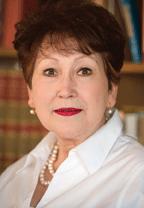
More than half a century after the Holocaust, I found myself on the steps of the Kahal Kadosh Shalom Synagogue, built in 1577 in Rhodes, the largest of Greece’s Dodecanese islands.
The entrance stood haplessly open, shockingly vulnerable and exposed to whoever cared to pass through it and into its heart. My attention was drawn to the bimah. The pedestal was covered in deep burgundy velvet, as if it waited patiently for the Torah scrolls to rest on it.
The absence of a Torah was of little consequence; since the Sephardic Jewish community was equally absent and daily readings were no longer recited. The steps leading up to the bimah were roped off with a braided cord. The cord itself reminded us that we were mere visitors, rather than active participants in this ancient sanctuary. Still, the well-worn seats that faced the bimah were ready, as if anticipating worshippers. The few remaining members prayed here for High Holy Day services led by a visiting rabbi from mainland Greece or Italy.
As a result of the German occupation of mainland Greece, Jews were arrested and displaced starting from September 1943 until July 1944. It was not until mid-July 1944 that the German Command ordered all Jewish males over the age of 16 years old on the island of Rhodes to report to the authorities. Since the order included bringing identity cards and work permits, the Jews assumed they would be recruited only into forced labor. The next morning, women were ordered to join their husbands and to bring their children, their belongings and food.
The order for the departure of the Jews came on July 23. They were loaded up on cargo vessels for transport. Those who survived the sea voyage to the port of Piraeus, Greece, were transferred to animal railroad cars. They arrived in Auschwitz on Aug. 16 where 1,200 men, women and children were, without hesitation, sent to the gas chambers.
Since those tragic times, mostly tourists visit Kahal Synagogue to see a memory of past Jewish life. In sharp contrast to the old synagogue, a new museum was established next door in 1997. A collection of oversized grainy black-and-white photos, wedding invitations and an embroidered bag for a tallit showed the vibrant life of the community before World War II.
Among the framed documents were two ketubahs written in Hebrew and decorated with artwork in various shades of blue, red and gold, which announced the happy unions of the congregants. Photographs of soccer players in crisp uniforms and neatly dressed students were also displayed. Playmates stopped what they were doing to gaze briefly into a camera lens. Families with babies, grandparents and cousins all sat for portraits in their best clothes; proud of who they were and their place in society. They looked wonderfully cosmopolitan in the latest fashions of Western Europe. I was relieved that there were no photos of the round up of the Jews, presumably a conscious decision by the museum organizers. How stunningly appropriate that we viewed images of vibrant girls and boys, loving mothers and fathers, friends and lovers, as they would have wanted to be remembered.
Hearing of a town Holocaust memorial, I retraced my steps to the center of La Juderia, the Square of the Martyred Jews. There it stood in the midst of the exuberant chaos of people, a lone mute sentinel. Individuals sat on the low wall around the monument with their backs turned as if the somber obelisk held no meaning for them. The monument was a black stone tower, slick as glass, with inscriptions carved on all sides. Each side beckoned us to read the same words in different languages. Each chiseled message began with a stern demand:
NEVER FORGET
IN ETERNAL
MEMORY
OF THE 1604
JEWISH MATYRS
OF RHODES AND COS
WHO WERE
MURDERED IN
NAZI DEATH CAMPS
There were no graves or burial markers for these victims. Instead, only memories remained of them in the synagogue where they worshipped, on the walls of the museum and on this solitary memorial.
Sick at heart, I walked away deep in sorrow. In this idyllic isle of perfumed bougainvillea and cobblestone lanes, where the Jews had lived for 2,000 years, they became the doomed victims of hostility and unspeakable violence. “Never forget” were words etched into stone years ago, yet remain our solemn duty today.
When you prepare to attend Yom HaShoah observances, don’t forget that freely elected governments and not illegitimate forces passed the punishing anti-Jewish laws.
The American Holocaust survivors recognized, through their own tragic experiences, that lawmakers have the power to protect rights and freedoms, as well as to deny them. With this in mind, the American survivors created Holocaust memorial services to be sponsored by state governments. Don’t forget to attend the Kansas or the Missouri government sponsored observances.
Gov. Sam Brownback and state legislators will be participating in the 2017 State of Kansas Holocaust Commemorative Service. Your presence is needed to show lawmakers that we put a high value on remembrance and memorial. Your presence will demonstrate a deep concern to safeguard our civil liberties and those of other vulnerable minority groups during these troubling times.
The State of Kansas Holocaust Commemorative Service will be held at 1 p.m. Monday, May 1. The new location will be at the Downtown Ramada Inn, Topeka, Kansas. The service is free open to the public. Groups are welcome. RSVP to Topeka’s Temple Beth Sholom, 785-272-6040. Holocaust survivors, their sons and daughters, and World War II Veterans will be recognized. Please offer to provide transportation for those may need it.
Mary Greenberg, Ph.D. serves on the State of Kansas Holocaust Commission. Her speaking engagements on preventing anti-Semitism, and the link between anti-Semitism and leadership are based on her research that advances the study of the Jewish people in the Diaspora.